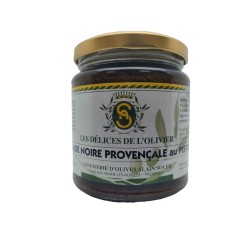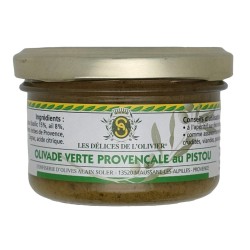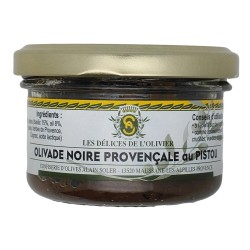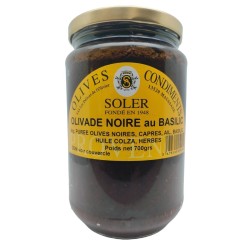
The Eternal Debate: Anchovies, No Thanks! Olivade Against Tapenade
Crucial Choice: Olivade or Tapenade
1.1 Introduction to Olive Spreads
Olive spreads, emblematic of Mediterranean cuisine, spark an enduring gastronomic debate: Olivade or Tapenade? These two olive-based delights captivate the taste buds, but a fundamental distinction lies in the presence or absence of anchovies.
1.2 Fundamental Distinction: Absence of Anchovies
At the heart of this culinary debate, olivade distinguishes itself by the absence of anchovies in its composition, unlike tapenade. This essential difference makes it a preferred choice for those who prefer to savor the pure essence of olives without the influence of anchovies. In the next section, let's delve into the unique flavor profiles of these two spreads to better understand their respective appeal.
2. Unique Flavor Profiles
2.1 Olivade: Rich Flavors of Olives
Let's now immerse ourselves in the delightful world of olivade, a spread that celebrates the purity of olives. The recipe crafted by Les Délices de l'Olivier skillfully combines black or green olives, capers, and Provençal pistou. This olivade offers an explosion of rich and nuanced flavors. Olives, the true protagonists, bring a creamy texture and distinctive notes, while pistou, with its blend of basil, garlic, and oil, adds a unique Provençal touch. Olivade, without the shadow of anchovies, provides an authentic taste experience.
2.2 Tapenade: Anchovies and Complexity
On the other hand, let's delve into the complex universe of tapenade, a traditional dish born in Marseille in 1880. Composed of black or green olives, olive oil, capers, garlic, anchovies, and herbs of Provence, tapenade offers a symphony of flavors. Anchovies, salted and crushed, add a distinctive umami note, creating complexity that appeals to bold flavor enthusiasts. Tapenade, with its rich history and deep flavors, represents an equally captivating culinary experience.
3. Regional Variations and Tasting Tips
3.1 Les Délices de l'Olivier: Provençal Olive Cultivation
Let's explore regional variations with a particular focus on Les Délices de l'Olivier's Provençal olivade with pistou. This unique recipe, inspired by Provençal olive cultivation, combines traditional craftsmanship and quality ingredients. Black or green olives at 65%, capers, pistou (basil, garlic, and oil), and herbs of Provence create a harmonious fusion of Provençal flavors. Immersing in this regional variant offers an authentic culinary experience.
3.2 Origins and Tasting Tips
Let's then return to the origin of tapenade, an emblematic dish invented in Marseille in 1880. This Provençal creation, composed of olives, olive oil, capers, garlic, anchovies, and herbs of Provence, embodies the gastronomic heritage of the region. For an optimal tasting experience, discover tips for choosing between olivade and tapenade, taking into account your taste preferences. From regional choices to tasting tips, this section concludes our exploration of the debate between olivade and tapenade.




